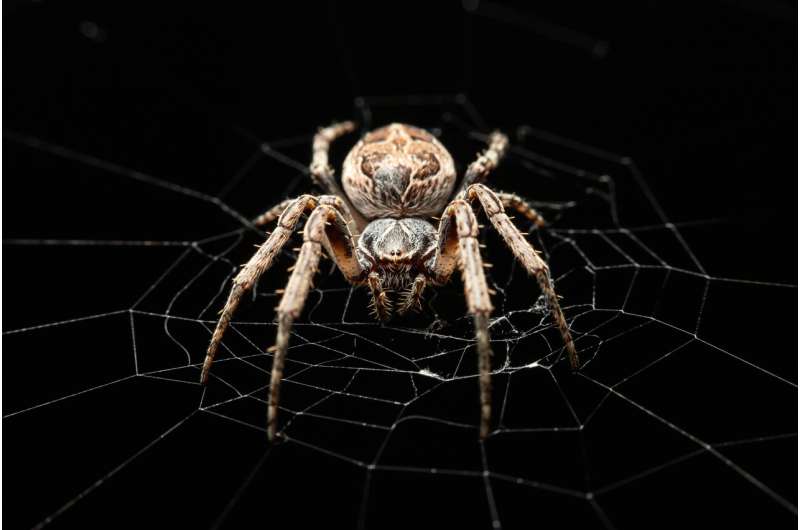This article has been reviewed according to Science X's editorial process and policies. Editors have highlighted the following attributes while ensuring the content's credibility:
fact-checked
trusted source
proofread
A spider silk sound system: Webs match acoustic particle velocity for long-distance sound detection

The best microphone in the world might have an unexpected source: spider silk. Spiders weave webs to trap their insect snacks, but the sticky strands also help spiders hear.
Unlike human eardrums and conventional microphones that detect sound pressure waves, spider silk responds to changes in the velocities of air particles as they are thrust about by a sound field. This sound velocity detection method remains largely underexplored compared to pressure sensing, but it holds great potential for high-sensitivity, long-distance sound detection.
Researchers from Binghamton University investigated how spiders listen to their environments through webs. They found the webs match the acoustic particle velocity for a wide range of sound frequencies. Ronald Miles presented their work May 16 at a joint meeting of the Acoustical Society of America and the Canadian Acoustical Association, held May 13–17 at the Shaw Center located in downtown Ottawa, Ontario, Canada.
"Most insects that can hear sound use fine hairs or their antennae, which don't respond to sound pressure," said Miles, a professor of mechanical engineering.
"Instead, these thin structures respond to the motion of the air in a sound field. I wondered how to make an engineered device that would also be able to respond to sound-driven airflow. We tried various man-made fibers that were very thin, but they were also very fragile and difficult to work with. Then, Dr. Jian Zhou was walking in our campus nature preserve and saw a spiderweb blowing in the breeze. He thought spider silk might be a great thing to try."
Before building such a device, the team had to prove spiderwebs truly responded to sound-driven airflow. To test this hypothesis, they simply opened their lab windows to observe the Larinioides sclopetarius, or bridge spiders, that call the windowsills home. They played sound ranging from 1 Hz to 50 kHz for the spiders and measured the spider silk motion with a laser vibrometer.
They found the sound-induced velocity of the silk was the same as the particles in the air surrounding it, confirming the mechanism that these spiders use to detect their prey.
"Because spider silk is, of course, created by spiders, it isn't practical to incorporate it into the billions of microphones that are made each year," said Miles. "It does, however, teach us a lot about what mechanical properties are desirable in a microphone and may inspire entirely new designs."
More information: Technical program: https://eppro02.ativ.me/src/EventPilot/php/express/web/planner.php?id=ASASPRING24
Provided by Acoustical Society of America



















